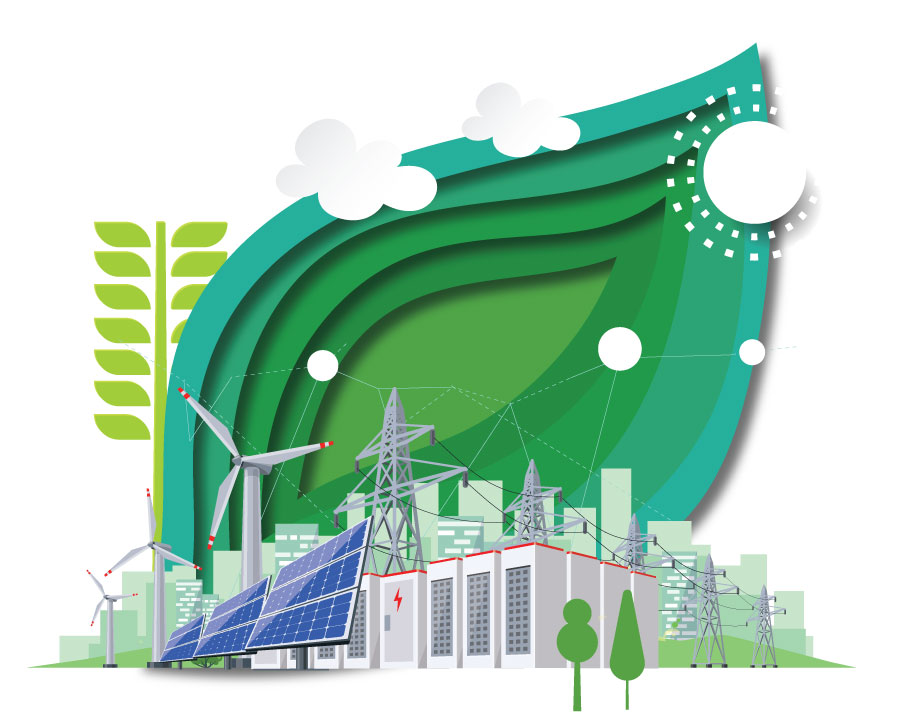Energy Blog: The Role of Government in Sustainable Aviation
Energy Blog: The Role of Government in Sustainable Aviation


Net-zero sustainable aviation by 2050 has brought mind-dizzying attention to research funding for sustainable aviation fuels (SAF), ultra-efficient systems, and lighter, more aerodynamic designs.
Jim Heidmann, acting director of the advanced air vehicles program at NASA acknowledged the objective of the United States to get the U.S. aviation sector to net-zero greenhouse gas emissions by 2050 is “audacious.” But the role of government is to “set a vison” and help industry invest and ultimately obtain meaningful technology “over the finish line,” he told a small audience of mechanical engineers at TurboExpo 2023 in Boston last month.
Representatives from the Department of Energy and the Federal Aviation Administration (FAA) joined Heidmann and outlined the work and funding being done as agencies look to not only fund breakthroughs in innovations, but encourage equity in workforce participation. Just last month, the U.S. Department of Energy’s (DOE) Office of Fossil Energy and Carbon Management (FECM) made $17.7 million in funding available to “support novel, early-stage research and development” and create opportunities for traditionally underrepresented communities. A long-term plan, the funding includes projects such as new academic curricula related to geosciences and supporting interdisciplinary training in humanities-driven science, technology, engineering, and mathematics (HDSTEM) fields.
Robert Schrecengost, division director of hydrogen with carbon management, Department of Energy, highlighted the work of FECM and the DOE’s Office of Clean Energy Demonstrations (OCED), including the creation of Regional Clean Hydrogen Hubs (H2Hubs). The H2Hubs includes up to $7 billion to establish as many as 10 regional clean hydrogen hubs across America. Clean hydrogen hubs are networks of hydrogen producers, consumers, and local connective infrastructure to accelerate the use of hydrogen as a clean energy carrier.
Strategies across government agencies include partnerships and incentives, explained Arthur Orton, deputy CLEEN program manager with the FAA. The Sustainable Flight National Partnership (SFNP) activities include not only looking at airframes, but electrification, and SAFs. For example, the transonic truss-braced wing is a unique design of the aircraft’s wings which reduces drag during flight and so reduces fuel consumption by up to 10 percent. NASA is testing this innovative configuration as an option for future airliners.
Moreover, the FAA’s Continuous Lower Energy, Emissions and Noise (CLEEN) program is developing certifiable aircraft and engine technologies that reduce noise and emissions while increasing fuel efficiency. Orton says one-to-one cost matching has resulted in a saving to the aviation industry 36.4 billion gallons of fuel by 2050, reducing airline costs by 72.8 billion dollars and lowering carbon dioxide emissions by 424 million metric tons.
Under CLEEN Phase III, the FAA works with six industry partners. General Electric Aviation, for example, is on its third award since 2010. GE and the U.S. FAA will invest nearly $55 million over five years on work that includes open fan engine architecture. This strategy has fan blades that are not enclosed by a fan case. Open fans increase air flow, which could create greater propulsive efficiency for future aircraft engine applications.
Looking at the Aviation Sustainability Center (ASCENT) research funded by FAA, NASA, the Department of Defense, Transport Canada, and the Environmental Protection Agency and co-led by Washington State University and the Massachusetts Institute of Technology, project 1 has built a set of decision support tools. One of these tools is a set of harmonized techno-economic analyses (TEAs) for the certified SAF pathways. Recently, these TEA tools were used to assess possible scenarios for the Sustainable Skies Act to be enacted and its impact on potential SAF fuel prices.
Finally, the Sustainable Aviation Fuels (FAST-SAF) and Low-Emission Aviation Technologies (FAST-Tech) Grant Program aim to accelerate the production and use of SAF and to accelerate the development and demonstration of low-emission aviation technologies. And the Sustainable Aviation Fuel (SAF) Grand Challenge includes work with feedstock, supply chain, policies, and communication of progress.
One project is to enable alcohol-to-jet and coprocessing pathways. Activities under this workstream focus on improving the carbon intensity of existing corn ethanol facilities through carbon-smart technologies and agricultural practices. Additionally, dramatic improvements in water balances and energy intensity of the ATJ process are possible through development of water-tolerant catalysts and advanced separation technologies. The utilization of bio-derived intermediates in existing capital assets may also contribute to the 2030 production goal.
Cathy Cecere is membership content program manager.
Representatives from the Department of Energy and the Federal Aviation Administration (FAA) joined Heidmann and outlined the work and funding being done as agencies look to not only fund breakthroughs in innovations, but encourage equity in workforce participation. Just last month, the U.S. Department of Energy’s (DOE) Office of Fossil Energy and Carbon Management (FECM) made $17.7 million in funding available to “support novel, early-stage research and development” and create opportunities for traditionally underrepresented communities. A long-term plan, the funding includes projects such as new academic curricula related to geosciences and supporting interdisciplinary training in humanities-driven science, technology, engineering, and mathematics (HDSTEM) fields.
Robert Schrecengost, division director of hydrogen with carbon management, Department of Energy, highlighted the work of FECM and the DOE’s Office of Clean Energy Demonstrations (OCED), including the creation of Regional Clean Hydrogen Hubs (H2Hubs). The H2Hubs includes up to $7 billion to establish as many as 10 regional clean hydrogen hubs across America. Clean hydrogen hubs are networks of hydrogen producers, consumers, and local connective infrastructure to accelerate the use of hydrogen as a clean energy carrier.
Strategies across government agencies include partnerships and incentives, explained Arthur Orton, deputy CLEEN program manager with the FAA. The Sustainable Flight National Partnership (SFNP) activities include not only looking at airframes, but electrification, and SAFs. For example, the transonic truss-braced wing is a unique design of the aircraft’s wings which reduces drag during flight and so reduces fuel consumption by up to 10 percent. NASA is testing this innovative configuration as an option for future airliners.
Moreover, the FAA’s Continuous Lower Energy, Emissions and Noise (CLEEN) program is developing certifiable aircraft and engine technologies that reduce noise and emissions while increasing fuel efficiency. Orton says one-to-one cost matching has resulted in a saving to the aviation industry 36.4 billion gallons of fuel by 2050, reducing airline costs by 72.8 billion dollars and lowering carbon dioxide emissions by 424 million metric tons.
Under CLEEN Phase III, the FAA works with six industry partners. General Electric Aviation, for example, is on its third award since 2010. GE and the U.S. FAA will invest nearly $55 million over five years on work that includes open fan engine architecture. This strategy has fan blades that are not enclosed by a fan case. Open fans increase air flow, which could create greater propulsive efficiency for future aircraft engine applications.
Looking at the Aviation Sustainability Center (ASCENT) research funded by FAA, NASA, the Department of Defense, Transport Canada, and the Environmental Protection Agency and co-led by Washington State University and the Massachusetts Institute of Technology, project 1 has built a set of decision support tools. One of these tools is a set of harmonized techno-economic analyses (TEAs) for the certified SAF pathways. Recently, these TEA tools were used to assess possible scenarios for the Sustainable Skies Act to be enacted and its impact on potential SAF fuel prices.
Finally, the Sustainable Aviation Fuels (FAST-SAF) and Low-Emission Aviation Technologies (FAST-Tech) Grant Program aim to accelerate the production and use of SAF and to accelerate the development and demonstration of low-emission aviation technologies. And the Sustainable Aviation Fuel (SAF) Grand Challenge includes work with feedstock, supply chain, policies, and communication of progress.
One project is to enable alcohol-to-jet and coprocessing pathways. Activities under this workstream focus on improving the carbon intensity of existing corn ethanol facilities through carbon-smart technologies and agricultural practices. Additionally, dramatic improvements in water balances and energy intensity of the ATJ process are possible through development of water-tolerant catalysts and advanced separation technologies. The utilization of bio-derived intermediates in existing capital assets may also contribute to the 2030 production goal.
Cathy Cecere is membership content program manager.





.jpg?width=854&height=480&ext=.jpg)